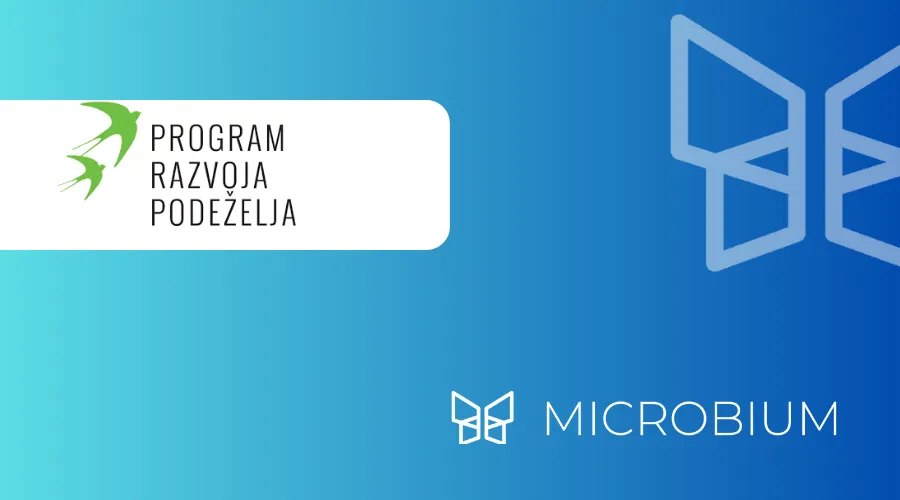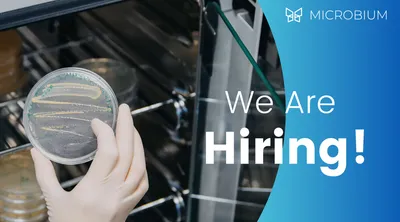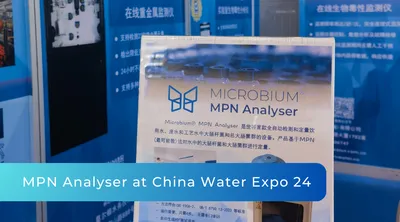· 6 min read
Agrotech foil recycling
Establishing a recycling model of agro-stretch film for bales and silage films with the aim of facilitating the organization of farmers and reducing negative impacts on the environment.

Project title: Establishing a recycling model of agro-stretch film for bales and silage films with the aim of facilitating the organization of farmers and reducing negative impacts on the environment
As a consortium of 12 partners, we were successful in the 4th public tender of the Cooperation Measure of the Rural Development Program 2014-2020, underpinning 16.5 Support for joint action to mitigate or adapt to climate change and for joint approaches to environmental projects and sustainable environmental practices.
Period of implementation of project activities: 1/12/2020 – 30/11/2023
No. decisions on the right to funds: 33133-3025/2019/13
Value of eligible project costs: €250,000
Percentage of co-financing: 100%
Partners in the project:
- Microbium, napredne tehnologije, d.o.o. (vodilni partner),
- Virc, storitve s kmetijsko mehanizacijo d.o.o. Novo mesto,
- Kmetijsko gozdarska zbornica Slovenije, Kmetijsko gozdarski zavod Novo mesto,
- Kmetijsko gozdarska zbornica Slovenije, Kmetijsko gozdarski zavod Kranj,
- Omaplast reciklaža plastike d.o.o.,
- Larting, podjetje za inženiring, projektiranje in nadzor,
- Grm Novo mesto – center biotehnike in turizma,
- Sava, kmetijsko gozdarska zadruga z.o.o. Lesce
- Kmetija Metelko,
- Kmetija Čretnik,
- Kmetija Kepec,
- Kmetija Virc.
Project description:
The purpose of the project is to establish a recycling model of waste agro-stretch foil for bales and foils for silos, supported by a developed online platform for the practical implementation of the recycling model in practice and other research and analysis within the project with the aim of reducing negative consequences on the environment and facilitating the organization of waste delivery foils for recycling for agricultural holdings as a response to current challenges. In the project, we want to connect research and practice. We will address both the agricultural field (preparation of fodder with the help of agro-stretch foils for bales and foils for silos) and nature conservation (recycling of used waste foils) on the other hand. We will introduce practical and innovative approaches.
Since the farmers are responsible for taking care of the waste foil themselves, the project will enable a greater number of collection centers and farmers will also be issued a credit for the purchase of new foil in exchange for the waste foil based on the weighing sheet. At the same time, we will make farmers aware of the importance of foil recycling. We will investigate several open questions, such as questions about foil materials, about foil materials before and after use, foil cleanliness, the impact of foil on the environment, we will analyze forage samples in bales and silos, and the effect of weather conditions on forage and foil material. We will establish an online platform that will serve the practical implementation of the foil recycling model. In the platform, among other things, the locations of collection points will be visible.
Awareness of care for nature in the agricultural industry is important for the long-term conservation of nature and for the preservation of biodiversity in agricultural and environmental habitats. Education and training on the topic of waste foil recycling will help to raise environmental awareness and consider responsible handling of waste foil.
The presentation of the win-win model of waste foil recycling means a closed flow between the new foil and the spent used waste foil and means in practice benefits for the stakeholders:
- farmers who are buyers of new foil and send waste foil for processing (they solve the problem with waste foil in a cheaper, faster and simpler way and obtain cheaper new foil),
- providers of new foil (they are advertised on the website and in the application, where they are visible to buyers – agricultural holdings),
- waste foil processors (organized, more planned and continuous flow of
- waste foil, obtaining higher quality waste for a lower price) and
- collectors of waste foil (earnings for collection and removal of waste foil).
Objectives:
- To make it possible for agricultural holdings to hand over waste foil economically. We will make this possible with the established innovative model of waste foil recycling, where agricultural holdings will receive credits for the purchase of new foil as a reward for responsible behavior.
- To enable agricultural holdings to hand over waste foil easily and without delay. We will achieve this with a developed online platform where they will be able to register, find locations to drop off foil, find providers of new foil that are included in the recycling, where they can get a credit of some value when buying new foil. Here, agricultural holdings will also be able to propose new collection locations.
- Find out the composition of foil materials from different manufacturers. With this, we will find out the differences between manufacturers, which foil is more or less controversial in terms of environmental impact.
- Identify the difference between foil material that has not yet been used and material that has already been used. This will determine the wear and tear of the material during use and the potential impact on the environment. Here, we will take into account the influence of weather from the database for monitoring weather conditions on pilot farms.
- To find out what the impact of waste foil is on the environment in case of incineration and what is the impact of foil on the environment if it is left in nature, so that we can more easily explain the benefits of recycling waste foil.
- To find out what is the impact of waste foil impurities on the processing process and how much cleanliness is still acceptable for handing over waste foil for recycling, so that within the framework of the recycling model, we can hand over to agricultural holdings the minimum requirements regarding the cleanliness of waste foil sent for recycling.
- Determine the quality of the forage according to the age of the forage before cutting and the dryness of the forage before wrapping or storage in silos and the age of fodder in foil. With this, we will compare feed between pilot farms and between different producers.
- Investigate the influence of weather conditions on forage quality. Weather conditions, such as the air temperature when the forage is being baled or silo.
- To test a new method of covering the silos of a Dutch foil producer to determine whether this method results in lower losses of waste silage.
- Establish a pilot collection center in Sava KGZ Lesce and look for new potential locations of collection centers.
- Inform as many agricultural holdings as possible in the regions about the waste foil recycling model, especially with the help of partners KGZS Novo mesto and KGZS Kranj; dissemination.
Results:
- Established foil recycling model.
- Online platform for the implementation of the foil recycling model.
- Analyzes of foil materials.
- Analysis of foil material samples before and after use.
- Environmental impact research.
- Investigation of the cleanliness of waste foil.
- Analysis of forage samples in bales and in silos.
- Research on the influence of weather conditions on feed quality and material.
- Practical tests on pilot farms.
- Established database of fodder preparation with agro-stretch foil for bales and/or foil for silos.
European Commission-EAFRD: European Commission-EAFRD
Rural development program: www.program-podezelja.si
European Agricultural Fund for Rural Development: Europe invests in rural areas.


.BSK2REKq_feNRP.webp)
